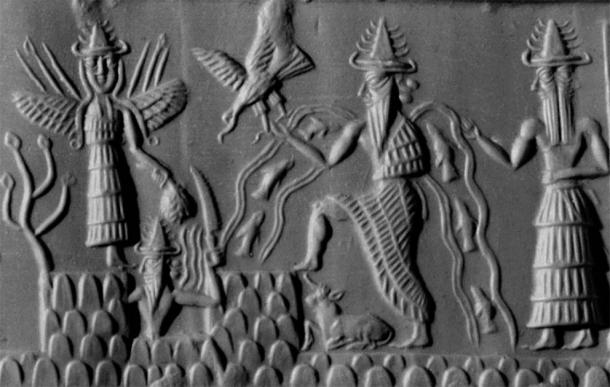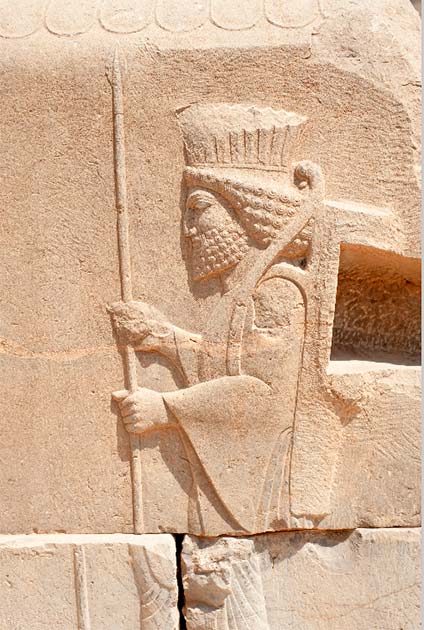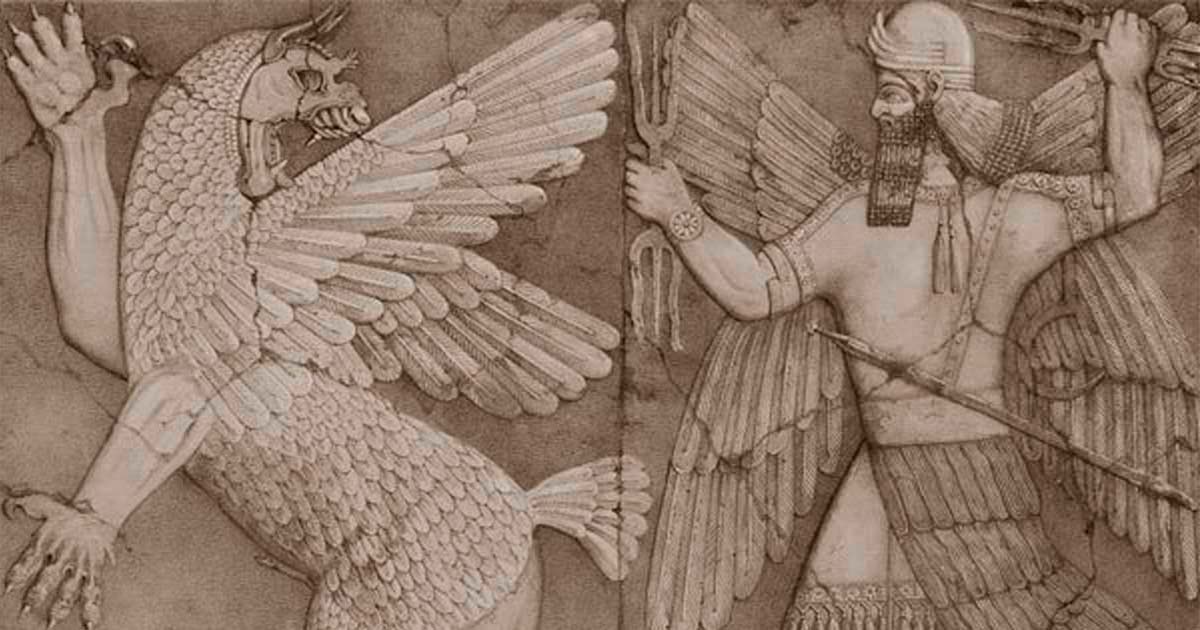The Origins of Human Beings According to Ancient Sumerian Texts
Sumer, or the ‘land of civilized kings’, flourished in Mesopotamia, now modern-day Iraq, around 4500 BC. Sumerians created an advanced civilization with its own system of elaborate language and writing, architecture and arts, astronomy and mathematics. Their religious system was a complex one comprised of hundreds of gods. According to the ancient texts, each Sumerian city was guarded by its own god; and while humans and gods used to live together, the humans were servants to the gods.
The Tablet of Nippur: Discovering the Ancient Sumerian Texts
As one of the earliest known written creation stories, the Sumerian creation legend holds significant importance offering valuable insights into the religious, political, and cultural aspects of ancient Mesopotamia.
The Sumerian creation myth can be found on a tablet in Nippur, an ancient Mesopotamian city founded in approximately 5000 BC. The creation of Earth (Enuma Elish) according to the Sumerian tablets begins like this:
When in the height heaven was not named,
And the earth beneath did not yet bear a name,
And the primeval Apsu, who begat them,
And chaos, Tiamut, the mother of them both
Their waters were mingled together,
And no field was formed, no marsh was to be seen;
When of the gods none had been called into being,
And none bore a name, and no destinies were ordained;
Then were created the gods in the midst of heaven,
Lahmu and Lahamu were called into being...The texts mention that at some point the gods mutinied against their labor.
When the gods like men
Bore the work and suffered the toll
The toil of the gods was great,
The work was heavy, the distress was much.

The figures can be identified as gods by their pointed hats with multiple horns. The figure with streams of water and fish flowing from his shoulders is Ea (Sumerian Enki), god of subterranean waters and of wisdom. Behind him stands Usimu, his two-faced vizier (chief minister). At the centre of the scene is the sun-god, Shamash (Sumerian Utu), with rays rising from his shoulders. He is cutting his way through the mountains in order to rise at dawn. To his left is a winged goddess, Ishtar (Sumerian Inanna). The weapons rising from her shoulders symbolise her warlike characteristics. (Public Domain)
The Unity of God and Man: How the First Human Came into Existence
Anu, the god of gods, agreed that their labour was too great. His son Enki, or Ea, proposed to create man to bear the labour, and so, with the help of his half-sister Ninki, he did. A god was put to death, and his body and blood was mixed with clay. From that material the first human being was created, in likeness to the gods.
You have slaughtered a god together
With his personality
I have removed your heavy work
I have imposed your toil on man.
…
In the clay, god and man
Shall be bound,
To a unity brought together;
So that to the end of days
The Flesh and the Soul
Which in a god have ripened –
That soul in a blood-kinship be bound.
This first man was created in Eden, a Sumerian word which means ‘flat terrain’. In the Epic of Gilgamesh, Eden is mentioned as the garden of the gods and is located somewhere in Mesopotamia between the Tigris and Euphrates rivers.

Adapa, the first human being in ancient Sumerian Texts failed to answer the question of “the bread and water of life” Anu. (AAref/Adobe Stock)
Initially human beings were unable to reproduce on their own, but were later modified with the help of Enki and Ninki. Thus, Adapa was created as a fully functional and independent human being. This ‘modification’ was done without the approval of Enki’s brother, Enlil, and a conflict between the gods began. Enlil became the adversary of man, and the Sumerian tablet mentions that men served gods and went through much hardship and suffering.
- Garden of Eden Depicted in Ancient Greek Religious Art
- Divine, Forbidden and Dangerous? Magic Apples in Ancient Mythology
Adapa, with the help of Enki, ascended to Anu where he failed to answer a question about ‘the bread and water of life’.
Opinions vary on the similarities between this creation story and the biblical story of Adam and Eve in Eden. While Adapa was granted great wisdom and knowledge by Enki, he unknowingly rejected the gift of immortality when offered the "bread and water of life. Adam and Eve were placed in the Garden of Eden and instructed not to eat from the Tree of the Knowledge of Good and Evil. However, they were tempted by the serpent and ate the forbidden fruit, leading to their expulsion from paradise.
Overall, the Sumerian creation myth holds significant importance as one of the earliest known written creation stories, offering valuable insights into the religious, political, and cultural aspects of ancient Mesopotamia.
Top image: Sumerian chaos monster and sun god. Source: Public Domain
Note: Ancient Sumerian translations were taken from William Bramley’s book, The Gods of Eden.
By John Black
References
Sumerian creation myth. Available at: https://en.wikipedia.org/wiki/Sumerian_creation_myth
1902. Enuma Elish - The Epic of Creation. Available at: https://www.sacred-texts.com/ane/enuma.htm
Sumerian Myths of Origins. Available at: https://www.sacred-texts.com/ane/sum/sum07.htm
Sumerian Deities. Available at: http://www.sarissa.org/sumer/sumer_g.php


















Comments
The Biblical creation story features in the two pre-eminent religions of the World. The first is obvious, being Christianity. The second is hardly known. It is Luciferian Satanism.
Very few understand how prevalent the latter religion is, or how much control over governments, corporations, charities and the entertainment industries such Satanic faithful have. Their version of the Garden of Eden story is one where a cruel God imprisons mankind and the serpent or Lucifer frees mankind and grants the blessed ones knowledge.
But what is some of mankind, thus, free for? It is free to do as it pleases. It is free to lie, to cheat and to kill. Paedophilia becomes paedocide and even paedovoria.
This escapes notice because most of the faithful pretend to be that which they are not. They pretend to be Christians, Atheists, Buddhists, Muslims and, frequently, Jews.
I faked my entry into that world. Thus, I faked becoming a fake Jew.
The Pope is a fake Catholic. Underneath that is fake Jewishness. Underneath that is the real thing.
The real thing. That was a famous song line once. The entertainment industries were captured even way back then.
History is captured too.
Hey
Woooww Nice Article
I've heard the story many times. First I've ever heard of a god slaughtered. (that is from the Bible) And you overlook the very obvious. The story is told by someone looking over it. Not living under it.
So. What does that mean?
The serpent raised mans knowledge and in turn they were banished from the garden of Eden so we can’t access the tree of life whereupon eating from the tree we could be indistinguishable from the gods
Pages